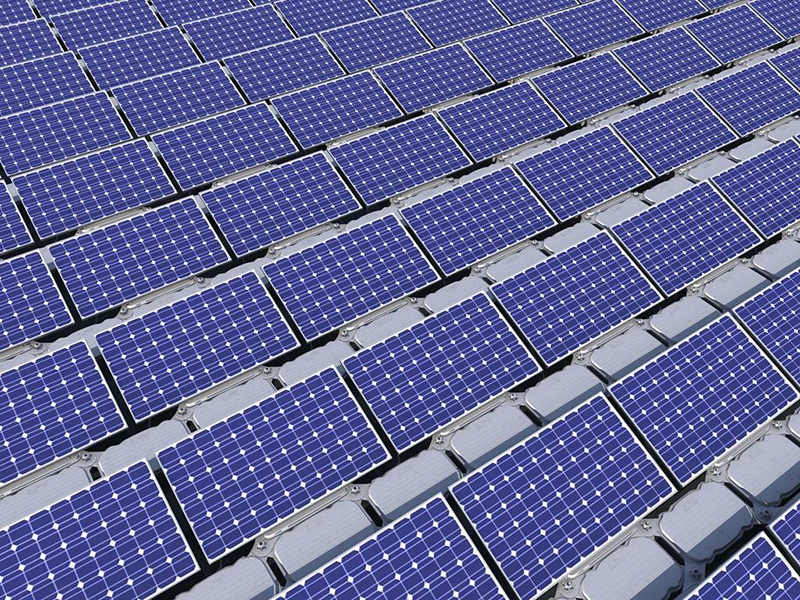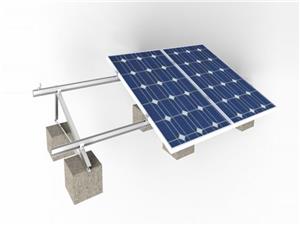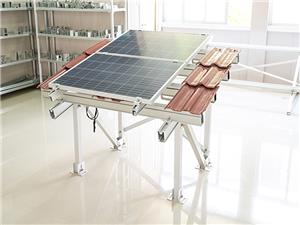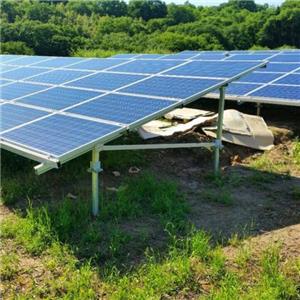Floating photovoltaic power plants on water may help Africa overcome difficulties
Floating photovoltaic power plants on water may help Africa overcome difficulties

Floating photovoltaic panels may find a place to be useful. This year, the severe drought has affected the power supply of many hydroelectric dams in Africa. At the same time, the scorching sun has also caused continuous evaporation and reduction of reservoir water storage. Therefore, some researchers asked why not use photovoltaic power generation? Floating photovoltaic panels can increase power supply on the basis of existing hydroelectric turbine units, while providing shelter for the water surface and reducing water evaporation.
At present, researchers are increasingly interested in installing floating photovoltaic panels on reservoirs and other bodies of water (tidal flats, flooded open-pit coal mines, etc.). The African plan is a compelling example.
A Africa has the richest solar energy resources in the world
In January, researchers at The European Commission's Joint Research Cen-tre in Ispra, Italy published a study to explore the construction of a hydroelectric and solar hybrid power generation on the sunniest continent in Africa The great potential of the station. Lead researcher Rocio Gonzalez Sanchezreckons believes that only 1% of the area of the African continent’s reservoirs can be doubled by photovoltaic panels to reach 58 GW. Increase the total power generation capacity of the African continent by a quarter.
Some of the largest reservoirs on the African continent may benefit from this, including The High Aswan on the Nile in Egypt-the sun in the Sahara Desert causes the reservoir to lose about a quarter of its annual water volume due to evaporation-southern Africa The Kariba and Cahora Bassa dams on The Zambezi and the Ako-sombo dam in Ghana. Sanchez said that this option is cheaper than building more dams and does not have the environmental and social adverse effects of flooding the land with reservoirs.
The problem of power shortage in Africa is serious. Not only are many households not yet connected to electricity, but they are also unable to meet the demand for electricity from the rapid economic growth. Hydropower has always been the mainstay of electricity in many African countries, but the long-term drought has made hydropower unsustainable. But Sanchez said that Africa has the world's most abundant solar resources, twice that of Europe. After studying the water surface data of 146 large reservoirs on the African continent, she believes that floating photovoltaic panels are an important opportunity to maximize the use of existing water resources to generate electricity.
In addition, the use of solar panels to cover the water surface can reduce evaporation. She estimates that this approach can help the African continent save nearly 1 billion cubic meters of water each year, enough to increase the generation of water turbines by 170 GWh each year.
The reservoirs of many hydroelectric dams in Africa have submerged large tracts of flat land. Therefore, the construction of dams not only takes up a lot of land, but is also vulnerable to water loss due to evaporation. But if floating photovoltaic panels are erected on the surface of a large area of water, shortcomings can be turned into advantages.
Kenya has plans to build floating photovoltaic power plants in three reservoirs on the Tana and Turkwel rivers. Sanchez believes that there are large areas of water and reservoirs suitable for the deployment of floating solar energy. There are also the Kai-nji Dam Reservoir in Nigeria, the Merowe and Roseires Reservoirs in Sudan, and the Côte d’Ivoire’s Kai-nji Dam Reservoir. Buyo Reservoir (Buyo), Lagdo Reservoir (Lagdo) in Cameroon and Mtera Reservoir (Mtera) in Tanzania.
B Floating photovoltaic power generation is becoming increasingly popular around the world
The deployment of floating photovoltaic panels is becoming more and more popular around the world, and some experts predict that it will soon become the "third largest" solar deployment mode after rooftop distributed and ground-based solar panels. According to Frank Haugwitz of Apricum, a German clean technology consulting company, it is estimated that 350 floating solar systems have been established in more than 35 countries, but most of them are not large in scale. By the end of last year, the total installed capacity of these floating solar systems was only 2.6 GW.
Japan took the lead in researching this model more than 10 years ago, but China has been in a leading position ever since. The largest floating solar project currently in use in the world is located at a submerged coal mine site in Anhui Province, with a total installed capacity of 150 megawatts. Interest in this technology is also growing in other parts of Asia.
The largest floating solar power project currently under construction is located in Saemangeum, South Korea, where it was once a tidal flat. The project plans to invest 4 billion US dollars, with a total installed capacity of 2.1 GW, and will be put into operation by 2025. The floating solar photovoltaic project in Kerala, India is located in the Banasura Sagar Reservoir. Maharashtra also mentioned that it will deploy a 600 MW floating photovoltaic project in one of India's largest hydropower projects-the Koyna power station reservoir.
According to reports, Singapore is exploring the idea of installing floating solar panels at sea to power data centers. Technicians consider installing floating solar panels between offshore wind turbines to take advantage of its grid connection. Asian countries and regions such as Taiwan, Thailand and Vietnam also have such plans.
European countries are also becoming more interested. The German renewable energy company BayWa completed a 27-megawatt project on a flooded bunker in the Netherlands last year. A study conducted for the company last year by the Fraunhofer Institute for Solar Ener-gy Systems recommended using flooded open-pit brown coal pits to deploy floating photovoltaic panels. There are 500 such pits spread across 470 square kilometers of rural areas in eastern Germany. The research institute estimates that the potential deployment scale of these mines can theoretically reach 56 GW. Even with a coverage rate of 5%, the installed capacity can reach 2.74 GW, which is equivalent to two large fossil fuel power stations.
C Water photovoltaic power generation may help Africa
On the surface, the cost of deploying solar panels on water is usually about 10% to 20% higher than on the ground. However, floating photovoltaic panels have their advantages: they do not occupy land, have less dust pollution, do not need to level the land, and do not need to cut trees or demolish buildings, and the water surface is cooler than land, so the energy output rate is usually higher. .
Deploying floating photovoltaic panels in dam reservoirs has other benefits. Grid-connected transmission lines are readily available, and the two power generation methods can complement each other. Solar power generation is used during the day, saving water and generating power at night.
But the biggest additional benefit is that solar panels covering the water can reduce water evaporation, thereby increasing the hydropower potential of the reservoir, especially in tropical regions. Reservoirs in most parts of the tropics drop as much as two meters of water each year due to water evaporation, which is equivalent to one-third of their storage capacity.
As a result, the Kariba Dam reservoir in southern Africa lost a quarter of its water intake. The Akosombo Dam reservoir in Ghana lost more than half. There is no feasible way to reduce the huge loss of water storage. Solar panels may be the answer.
Regarding the potential impacts of floating photovoltaic panels on wild animals and plants or the wider environment, no relevant environmental impact studies or other detailed analyses have been carried out. Sanchez believes that reduced underwater light or changes in water temperature may cause potential damage to the fishery. These changes will also reduce algae growth, which may be beneficial to freshwater ecosystems plagued by algal blooms. In Africa, some floating panels may be attacked by crocodiles or hippos. Similarly, such infrastructure may hinder these animals and other animals from accessing water resources.
A report from the World Bank three years ago stated that as land restricts the development of solar energy, floating photovoltaic panels have opened up new areas for global solar power generation, especially in land-constrained countries. Haugwitz said the World Bank is currently considering funding for hydroelectric and solar hybrid power plants in Pakistan, Turkey, Ukraine, Mali and Côte d’Ivoire.
Land restrictions on the deployment of solar energy are also giving birth to some other solutions. According to Brandi McK-uin of the University of California, Santa Barbara, California can turn a network of more than 6,000 kilometers of irrigation canals (the world’s largest water delivery system) into “solar canals,” which can replace irrigation pumps. Diesel generator to provide power.
The rapid flow of water in the irrigation canal prevents the solar panels from floating on the water, so they need to be installed on a metal bracket or suspension cable above the canal, but its role of shielding sunlight can still be retained to a large extent. A study published in March by McCon in the journal Nature Sustainabili-ty pointed out that, like solar panels floating on the water, suspended solar panels can also reduce water evaporation in irrigation canals. And it is possible to reduce the breeding of weeds.
It is obvious that whether it is floating or suspended, solar panels seem to function in an unprecedented way.




